

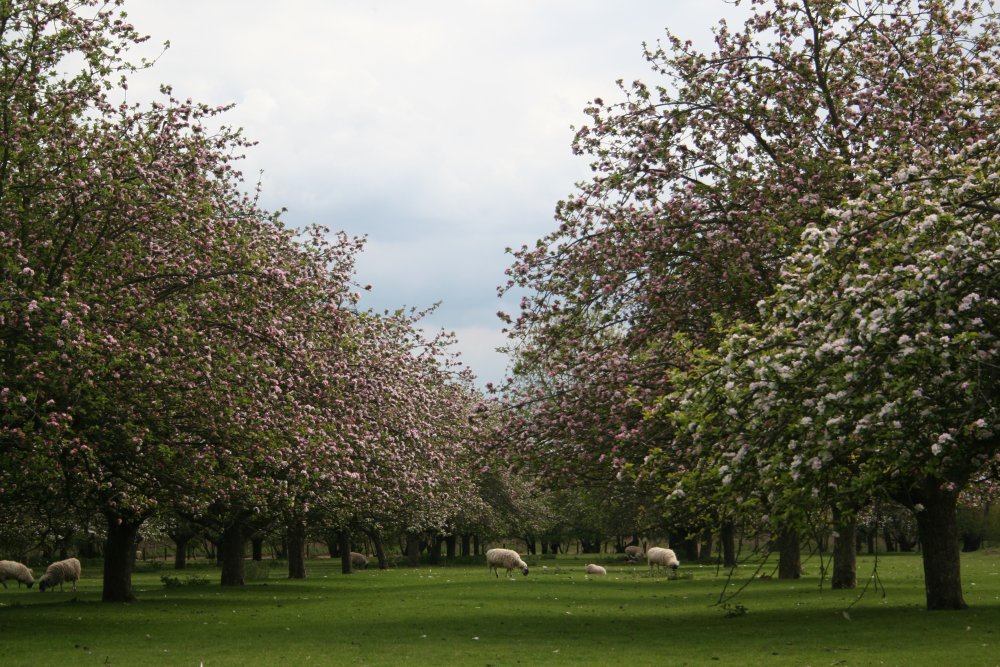 Cold weather extends blossom period, but it is warming up again nicely now!
Cold weather extends blossom period, but it is warming up again nicely now!
Last week I visited orchards in East Kent; traditionally an earlier site than West Kent and most varieties reached full bloom between Wednesday 5th May and Friday 7th May. Now had the weather been warm; e.g. 20 + degrees C, by today (Friday 14th May) very little blossom would be left. However visiting East Kent this Tuesday the blossom was still abundant and visually splendid. Closer inspection of flowers indicates that a high proportion have released their pollen, meaning that if pollination and fertilization has not yet been achieved, the remaining flowers yet to release their pollen become even more vital. Visiting an East Kent Fruit Society (EKFS) gathering at Adrian Scripps Ltd Wenderton Farm in Wingham, East Kent on Tuesday evening and Paul Ward's excellent organic farm near Sutton Valence in West Kent on Wednesday evening, the conversation was inevitably dominated by speculation about the very cold night and day time temperatures, with the threat of frost damage already evident and what this will determine in this years crop.
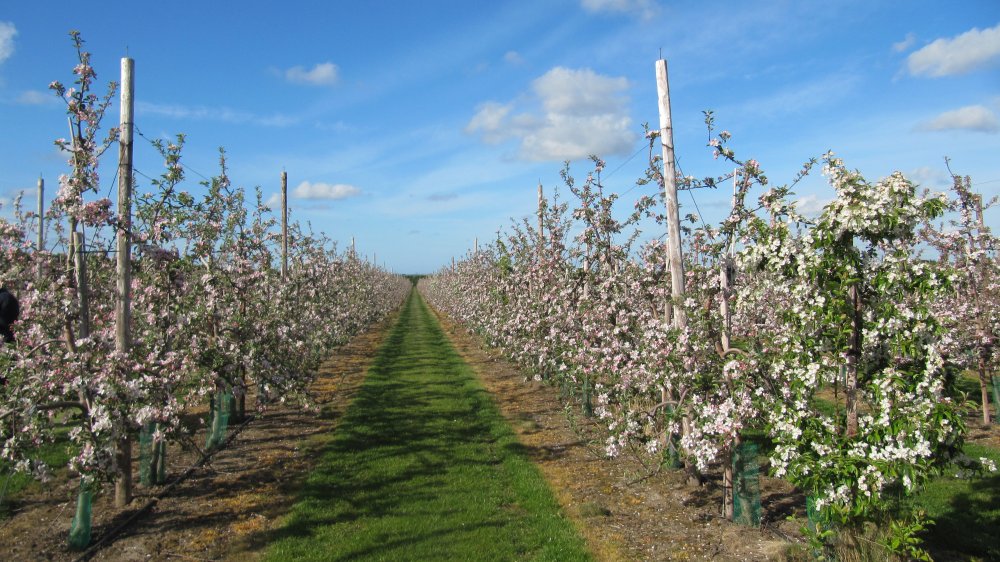
I mentioned in last weeks Journal the EPP (Effective Pollination Period) which seems even more poignant now after a prolonged period of low temperatures. I expect varieties with a propensity to crop; for example Gala and Braeburn are high on that list, but Cox a 'struggler' in cold weather is likely to be well down on last years crop levels. It has been so cold this week that EPP has become less of a conversation piece; but now much more relevant to potential crop yield. My good friend ( and Mentor) Roger Worraker was with me in East Kent on Tuesday and like me (who normally does feel the cold) found it necessary to 'pile on the layers' to keep warm.
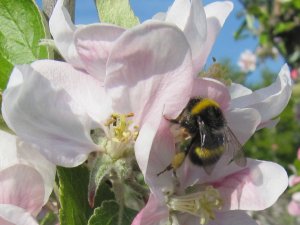
As we shivered, we speculated on the impact of this 'bitter' cold. Roger searched the archives for me yesterday and came up with some very poignant research information carried out many years ago. This data 'strikes a note of fear' as an average temperaure of 25C will see EPP achieved in 36 hours. 18C requires 65 hours, 10C 6 days and 5C results in NO crop set at all. Since we had day time temperatures of circa 7-10C and night hovering around freezing (or indeed lower) it is unlikely any flowers have set in that period. Of course some early flowers and late flowers may well produce more than enough fruit. Indeed, this afternoon In an orchard in East Sussex it was warm, the pollen release imbued the air with a wonderful fragrance and the bees were hard at work. With a warm weekend forecast any late flowers should have more than a sporting chance of pollinating and fertilising rapidly.
JACK FROST
Inspite of the very cold weather and frosts in many areas of the country, generally apple growers appear to have escaped with minimal damage. However one farm in West Kent has suffered devastating frost damage in the lower areas; a 'frost pocket' covering many acres has suffered what appears to be a total wipeout. Fortunately it is a farm of some 200 acres and all is not lost. Neverthe-less it will amount to a considerable financial loss.
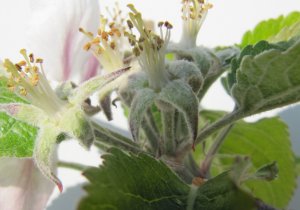
Recently I mentioned the 'Frost Buster' a tractor driven machine drawn through the orchard expelling hot air on a 10 minute cycle raising temperature above freezing. On an organic farm in Kent on Wednesday I saw another 'static' frost buster machine, this relies on the same principal of circulating hot air fuelled by propane gas, but uses a slowly rotating 'spout' to force the hot air into the surrounding orchard. In this instance it was being used to keep frost off a pear orchard.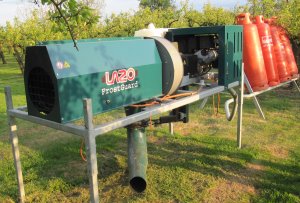
With the much warmer temperatures forecast for the week ahead, I expect the blossom cycle to move rapidly towards 'petal fall' if you look closely at the picture above you can just see a sign of the young fruitlet swelling.
Next week I will review the 'status quo' and hope desperately that signs of a crop set are clearly visible.
Take care
The English Apple Man